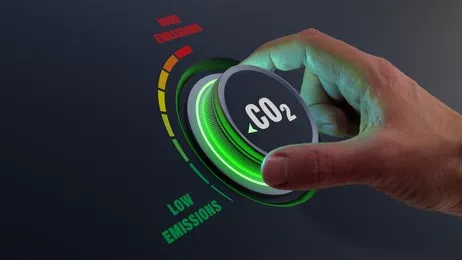


The world is changing fast, and so is the way we think about climate action and international trade.One bold policy with global impact is the EU’s Carbon Border Adjustment Mechanism, or CBAM.
If you’re a business owner, trader, policymaker, or climate-conscious citizen, you need to understand CBAM. This guide explains what CBAM is, why it matters, who it affects, and how to prepare for it.
At its core, CBAM is the European Union’s answer to a tricky problem: how to reduce carbon emissions at home without simply pushing them abroad. Imagine you’re a steel producer in Europe. You’re required to pay for the carbon emissions your factory produces, thanks to the EU’s Emissions Trading System (ETS). But what if your competitor in another country doesn’t face the same rules? They produce steel more cheaply, and if you try to compete, you might feel tempted to relocate your factory to a country with looser climate regulations. Experts call this ‘carbon leakage’—and it undermines the whole point of climate action.
CBAM is designed to stop this. It puts a price on the carbon emissions embedded in certain goods imported into the EU, making sure that imports face the same carbon costs as products made within the EU. The goal is simple: keep the playing field level, protect EU industries, and encourage cleaner production methods worldwide.
The EU has some of the world’s most ambitious climate goals, aiming to be climate-neutral by 2050. Over the past decade, the EU Emissions Trading System has forced many industries to pay for their carbon emissions. But as these rules have tightened, the risk of carbon leakage has grown. If companies simply move their factories to countries with weaker climate policies, global emissions don’t fall—they might even rise.
CBAM addresses this by tying the carbon cost to the product, not just the location of the factory. If you want to sell certain goods in the EU, you must calculate the carbon emitted during their production, regardless of the place of making. This approach supports the EU’s Green Deal and its “Fit for 55” package, which aims to cut greenhouse gas emissions by at least 55% by 2030.
CBAM is being rolled out in two phases. The first phase, which started in October 2023, is all about reporting. If you import covered goods into the EU, you must report the greenhouse gas emissions embedded in those products. Businesses and regulators are using this period to learn, as no payments or certificates are required yet.
The second phase begins in January 2026. That’s when the financial side kicks in. Importers will have to buy and surrender CBAM certificates, each representing one tonne of carbon dioxide equivalent (CO2e) embedded in their imports. The price of these certificates is linked to the average price of allowances in the EU ETS, ensuring that EU and non-EU producers face the same carbon costs.
Importers will need to submit annual reports, verified by independent third parties, detailing the emissions in their imported goods. If a carbon price was already paid in the country of origin, that amount can be deducted from the CBAM obligation, provided there’s proof.

CBAM doesn’t apply to everything—at least not yet. The mechanism currently covers some of the most carbon-intensive sectors:
Each product is identified by specific customs codes. If you’re an importer, it’s crucial to check whether your goods are on the CBAM list. The European Commission plans to review and possibly expand the list after 2025, so more sectors may be added in the future.
If you import CBAM-covered goods into the EU, there are several new requirements to keep in mind. First, you’ll need to register as an “authorised CBAM declarant” through the official EU portal. Once you’re registered, you’ll be able to bring in goods that fall under CBAM and use the official CBAM Registry to handle all your reporting and certificate needs. During the initial, transitional period, you’ll need to file quarterly reports that show the carbon emissions tied to each product you import. This isn’t something you can do alone—it means reaching out to your suppliers, building good communication, and making sure you’re getting accurate emissions data that matches the EU’s official rules. It’s all about teamwork and attention to detail to stay compliant from the very beginning. From January 2025, only the EU’s method will be accepted—no more default values or country-specific alternatives.
Once the definitive phase begins in 2026, you’ll need to buy CBAM certificates to cover the carbon content of your imports. These certificates are purchased through the CBAM Registry and must be surrendered annually, along with a verified emissions report. Maintaining detailed records of your calculations, supplier data, and certificate transactions is essential for compliance and audit purposes.
CBAM certificates are designed to mirror the cost of carbon in the EU’s internal market. Each certificate represents one tonne of CO2e, and the price is set weekly based on the average auction price of EU ETS allowances. This system ensures that EU producers and importers face the same carbon costs, eliminating any competitive advantage based solely on location.
There’s no room for speculation or trading—authorised declarants may only buy and must surrender certificates. If you’ve already paid a carbon price in the country of origin, you can deduct that amount from your CBAM obligation, provided you have the necessary documentation.
CBAM and the EU ETS are two sides of the same coin. The ETS makes EU companies buy allowances for each tonne of CO2e they emit. CBAM applies this rule to imports, ensuring all products consumed in the EU face similar carbon costs.
As the EU phases in CBAM, it is gradually reducing the free allowances it gives to domestic industries under the ETS. This shift makes the system fairer and more effective, ensuring that climate action doesn’t just shift emissions from one region to another.
CBAM is more than just a regulatory hurdle—it’s a catalyst for change throughout global supply chains. For EU importers, the new rules mean building systems for emissions tracking, reporting, and verification. Financial planning must now account for the cost of CBAM certificates, and procurement teams need to work closely with suppliers to secure accurate emissions data.
For non-EU exporters, CBAM is both a challenge and an opportunity. Companies that can show they produce goods with lower carbon emissions will have a real advantage in the EU market. This could mean investing in cleaner technologies, boosting energy efficiency, or switching to more sustainable raw materials. At the same time, transparency throughout the supply chain is becoming more important than ever. Having accurate and timely data isn’t just about compliance—it’s key to managing risks and keeping your access to the EU market secure.. Collaboration between importers, exporters, and logistics providers will be key to navigating the new landscape.

CBAM has sparked intense debate around the world. Supporters see it as a necessary step to drive global decarbonization and protect ambitious climate policies against carbon leakage undermining them. Many EU industries welcome the move, seeing it as essential for fair competition.
Critics, however, argue that CBAM could act as a trade barrier or a form of “green protectionism.” Some non-EU countries worry about the impact on their exports and economic development, especially if they lack the resources to invest in cleaner technologies. The World Trade Organization is watching closely to ensure that CBAM complies with international trade rules.
The EU is engaging with trading partners to explain CBAM, offer technical assistance, and encourage the adoption of similar carbon pricing measures elsewhere. The hope is that CBAM will inspire a “race to the top” in climate ambition, rather than triggering trade disputes.
Like any big policy shift, CBAM comes with its share of hurdles. For many businesses—especially small and medium-sized ones—figuring out exactly how much carbon is tied up in their products can be a real headache. Supply chains stretch across countries and continents, and getting precise emissions data from every step isn’t easy. Third-party verification adds more steps and costs. It’s easy to see why some companies feel overwhelmed or fear falling behind.
There’s also the bigger picture to consider. For businesses in developing countries, complying with CBAM can mean higher costs or even new barriers to selling goods in the EU.
On top of all this, CBAM has to fit within global trade rules. Policymakers are working to make sure the system is fair and doesn’t spark trade tensions or retaliation. For small businesses, the paperwork can feel overwhelming. There’s a strong push to simplify and smooth the process. The EU is planning support like technical help and development aid. But the exact details are still being finalized.
If CBAM affects your business, preparing early can make all the difference. Start by closely examining your supply chain—identify which products and suppliers the new rules impact. It’s worth investing in tools and systems that help you track, calculate, and report emissions data accurately. Don’t forget to reach out to your suppliers too, so you’re all on the same page and they know how to provide the information the EU requires.
It’s also important to make sure your whole team is up to speed. Whether it’s your sustainability folks, procurement, or finance, everyone should know what’s expected and when. Include the cost of CBAM certificates in your budget. Clean up production to lower emissions and future expenses.
If you export to the EU, learn the rules and upgrade operations to stay competitive.
Share accurate emissions data with buyers promptly to build trust and maintain your market position.
Most of all, keep your finger on the pulse. CBAM is still evolving, and the details may shift as the EU fine-tunes the policy. Stay connected with updates from the European Commission, industry groups, and don’t hesitate to get expert advice if you need it. Being proactive now will help you navigate whatever changes come next.
CBAM is more than a European policy—it signals changing global trade rules due to the climate crisis.
By pricing carbon in imports, the EU promotes a world where climate responsibility and economic competitiveness align.
For businesses, CBAM is both a challenge and an opportunity. Those who invest in emissions tracking, cleaner technologies, and supply chain transparency will be best positioned to thrive in the new landscape. CBAM shows policymakers and citizens that climate policy has entered a new phase—one where every product must account for its environmental impact.
Policymakers and nations are still writing the story of CBAM. As the world watches the policy unfold, one thing is clear: trade and climate action are now deeply intertwined. Staying informed, staying prepared, and embracing innovation will be the keys to success in this new era.
If you’re ready to take the next step, start mapping your supply chain, building your data systems, and talking to your suppliers today. The sooner you prepare, the better positioned you’ll be when CBAM’s definitive phase begins.